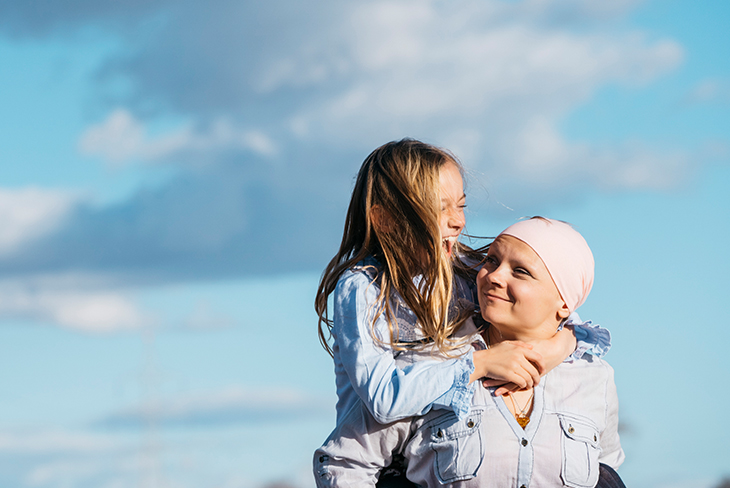Understanding cancer treatments

Cancer. It’s a word that fills most people with dread and conjures up all kinds of misconceptions – but not all cancers are a death sentence.
However, after diagnosis you’ll need treatment, and treatments like chemotherapy can seem scary, especially if you’ve experienced a loved one going through a particularly harrowing course.
Diagnosis
Dr Mark Ferreira, group chief medical officer, explains that most tumour diagnoses start with a biopsy. ‘This is usually performed by the surgeon, physician, radiologist or GP. Surgery is the mainstay of most tumours, either to establish a histological diagnosis or to try to remove the tumour.’
Whether surgery is performed depends on the stage of disease, says Dr Ferreira. He explains that if a patient has very advanced metastatic disease – that is, there are secondary tumours elsewhere – surgery will only be in the form of a biopsy to establish the diagnosis.
‘For example, early-stage breast disease can mean surgery upfront, followed by either chemotherapy, radiotherapy or both,’ he says. ‘But in some breast cancer patients we do chemotherapy, followed by surgery. These complex decisions are made in a multidisciplinary clinic.’
Myths and misconceptions
All cancers are not created equal, and each one behaves differently. ‘Each person and his or her cancer are different,’ says Dr Ferreira. ‘Not only do patients vary in age, sex and co-morbidities [the other medical conditions you might have], tumours are also at different stages and histology. We also look at the molecular nature of the tumour to further differentiate them and can therefore target them with very specific treatments.
‘Solid tumours differ from leukaemias, lymphoma and melanoma, and breast cancer which has spread to the bone is different from a primary bone tumour like an osteosarcoma. So the treatment and prognosis for each are completely different.’
In addition, he says, patients often think all chemotherapy is the same. ‘I always tell patients that the chemotherapy is tailored for their specific cancer, weight and height. If an aunt had breast chemotherapy, you are not going to get the same dose or chemotherapy. And everyone experiences chemotherapy differently. There are common side effects, but you will not necessarily get them. Also, not all chemotherapy causes hair loss and diarrhoea.’
Chemotherapy
Miempie Truter, oncology pharmacist at the Life Oncology Unit at Life Vincent Pallotti Hospital, is responsible for all aspects of administering patients’ chemotherapy treatments.
‘Chemotherapy can be used as single agents or in combinations, depending on the stage and type of cancer,’ she explains. ‘Chemotherapy drugs can also be given via various methods. Most commonly, chemo is given intravenously in a chemo outpatient unit or in hospital. But it can also be given orally in the form of tablets or capsules.’
The frequency and length of time that chemo is given varies from patient to patient depending on the kind of cancer, the regime followed, response to treatment and tolerance of side effects, she says. So treatments may be given daily, weekly or monthly.
‘Chemotherapy kills the fast-growing cancer cells, but in the process can also cause harm to the body’s own healthy cells and this causes the side effects,’ she explains. ‘Supportive medication is prescribed to alleviate and protect against chemotherapy side effects. Nausea and vomiting are the most common, for which an extensive range of medication is now available.’
Radiotherapy
Radiation therapy, also called radiotherapy, uses high doses of (ionising) radiation to kill cancer cells and shrink tumours, says Kulthum Ismail, lead radiotherapist at the Life Oncology Unit at Life Vincent Pallotti Hospital. ‘The ionising radiation damages or destroys cells in the area being treated, making it difficult for the cancer cells to continue to grow and multiply.’
She says there are three types of radiation treatment:
- External radiation uses high-energy rays, delivered to the tumour by a machine.
- Internal radiation or brachytherapy uses a radioactive ‘seed’ or ‘pellet’ placed inside the body, in or near the tumour, which releases energised particles that target and kill the tumour cells.
- Systemic radiation, where radioactive chemicals are introduced into the body, either orally or intravenously.
‘Radiation not only kills or slows the growth of cancer cells, it can also affect nearby healthy cells,’ says Ismail. ‘However, the healthy cells are able to repair themselves and almost always recover after treatment is over.’
She adds that every patient is different, but side effects will not be experienced immediately. ‘Patients continue with their normal day-to-day activities. Acute side effects will occur in weeks two to three and may include red and itchy skin, and fatigue. Other side effects depend on the area being treated.’
Most radiation therapy patients will need follow-up care for the rest of their lives, she says, and it is imperative that patients attend their check-ups.
What is targeted therapy?
Oncologists also use targeted and immunotherapy to treat some cancers. Targeted therapy drugs target something in or around a cancer cell that is helping it to grow and survive, while immunotherapy treatments use the immune system to find and attack cancer cells.
The information is shared on condition that readers will make their own determination, including seeking advice from a healthcare professional. E&OE. Life Healthcare Group Ltd does not accept any responsibility for any loss or damage suffered by the reader as a result of the information provided.

